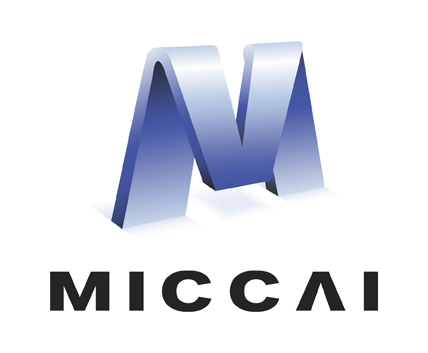Abstract
Convolutional Neural Networks have demonstrated human-level performance in the classification of melanoma and other skin lesions, but evident performance disparities between differing skin tones should be addressed before widespread deployment. In this work, we propose an efficient yet effective algorithm for automatically labelling the skin tone of lesion images, and use this to annotate the benchmark ISIC dataset. We subsequently use these automated labels as the target for two leading bias ‘unlearning’ techniques towards mitigating skin tone bias. Our experimental results provide evidence that our skin tone detection algorithm outperforms existing solutions and that ‘unlearning’ skin tone may improve generalisation and can reduce the performance disparity between melanoma detection in lighter and darker skin tones.
Access this chapter
Tax calculation will be finalised at checkout
Purchases are for personal use only
Similar content being viewed by others
References
Alvi, M., Zisserman, A., Nellåker, C.: Turning a blind eye: explicit removal of biases and variation from deep neural network embeddings. In: Leal-Taixé, L., Roth, S. (eds.) ECCV 2018. LNCS, vol. 11129, pp. 556–572. Springer, Cham (2019). https://doi.org/10.1007/978-3-030-11009-3_34
Brinker, T.J., et al :A convolutional neural network trained with dermoscopic images performed on par with 145 dermatologists in a clinical melanoma image classification task. European J. Cancer (Oxford, England: 1990), 111 148–154 (2019)
Brinker, T.J., The melanoma classification benchmark, et al.: Comparing artificial intelligence algorithms to 157 German dermatologists. Eur. J. Cancer 111, 30–37 (2019)
Buolamwini, J., Gebru, T.: Gender Shades: Intersectional Accuracy Disparities in Commercial Gender Classification. In Conference on Fairness, Accountability and Transparency, pp. 77–91, PMLR (2018)
Codella, N.C.F., et al.: Skin lesion analysis toward melanoma detection: A challenge at the 2017 International symposium on biomedical imaging (ISBI), hosted by the international skin imaging collaboration (ISIC). In 2018 IEEE 15th International Symposium on Biomedical Imaging (ISBI 2018) pp. 168–172 (2018)
Collins, K.K., Fields, R.C., Baptiste, D., Liu, Y., Moley, J., Jeffe, D.B.: Racial Differences in Survival after Surgical Treatment for Melanoma. Ann. Surg. Oncol. 18(10), 2925–2936 (2011)
Fitzpatrick, T.B.: The validity and practicality of sun-reactive skin types I through VI. Arch. Dermatol. 124(6), 869–871 (1988)
Ganin, Y., et al.: Domain-adversarial training of neural networks. In: Csurka, Gabriela (ed.) Domain Adaptation in Computer Vision Applications. ACVPR, pp. 189–209. Springer, Cham (2017). https://doi.org/10.1007/978-3-319-58347-1_10
Groh, M., et al.: Evaluating Deep Neural Networks Trained on Clinical Images in Dermatology with the Fitzpatrick 17k Dataset. arXiv:2104.09957 [cs], April 2021
Haenssle, H.A., Fink, C., Schneiderbauer, R., Toberer, F., Buhl, T., Blum, A., Kalloo, A., et al.: Man against machine: Diagnostic performance of a deep learning convolutional neural network for dermoscopic melanoma recognition in comparison to 58 dermatologists. Ann. Oncol. 29(8), 1836–1842 (2018)
Han, S.S., et al: Classification of the Clinical Images for Benign and Malignant Cutaneous Tumors Using a Deep Learning Algorithm. J. Invest. Dermatol. 138(7), 1529–1538 (2018)
He, K., Zhang, X., Ren, S., Sun, J.: Deep Residual Learning for Image Recognition. In 2016 IEEE Conference on Computer Vision and Pattern Recognition (CVPR), pp. 770–778, Las Vegas, NV, USA, IEEE (2016)
Huang, G., Liu, Z., Van Der Maaten, L., Weinberger, K.Q.: Densely Connected Convolutional Networks. In 2017 IEEE Conference on Computer Vision and Pattern Recognition (CVPR), pp. 2261–2269, Honolulu, HI, IEEE (2017)
Jiang, L., Huang, D., Liu, M., Yang, W.: Beyond Synthetic Noise: Deep Learning on Controlled Noisy Labels, August (2020). arXiv:1911.09781 [cs, stat]
Kim, B., Kim, H., Kim, K., Kim, S., Kim, J.: Learning Not to Learn: Training Deep Neural Networks With Biased Data. In 2019 IEEE/CVF Conference on Computer Vision and Pattern Recognition (CVPR), pp. 9004–9012, Long Beach, CA, USA, June IEEE (2019)
Kinyanjui, N.M., et al.: Estimating Skin Tone and Effects on Classification Performance in Dermatology Datasets. In Fair ML for Health, page 10, Vancouver, Canada, NeurIPS (2019)
Lio, P.A., Nghiem, P.: Interactive Atlas of Dermoscopy: 2000, Edra Medical Publishing and New Media. 208 pages. Journal of the American Academy of Dermatology. 50(5), 807–808 (2004)
Paszke, A., et al.: PyTorch: An imperative style, high-performance deep learning library. In: Wallach, H., Larochelle, H., Beygelzimer, F. dAlché-Buc, E. Fox, and R. Garnett, Advances in Neural Information Processing Systems 32, pp. 8024–8035 Curran Associates Inc (2019)
Rotemberg, V., et al.: A patient-centric dataset of images and metadata for identifying melanomas using clinical context. Scientific Data. 8(1) 34 (2021)
Szegedy, C., Vanhoucke, V., Ioffe, S., Shlens, J., Wojna, Z.: Rethinking the Inception Architecture for Computer Vision. In 2016 IEEE Conference on Computer Vision and Pattern Recognition (CVPR), pp. 2818–2826, IEEE Computer Society (2016)
Tan, M., Le, Q.V.: EfficientNet: Rethinking Model Scaling forConvolutional Neural Networks. Proceedings of the 36th International Conference on Machine Learning. 97 6105–6114 (2019)
Tzeng, E., Hoffman, J., Darrell, T., Saenko, K.: Simultaneous Deep Transfer Across Domains and Tasks. In 2015 IEEE International Conference on Computer Vision (ICCV). pp. 4068–4076 (2015)
Xie, S., Girshick, R.B., Dollár, P., Tu, Z., He, K.: Aggregated Residual Transformations for Deep Neural Networks. In: 2017 IEEE Conference on Computer Vision and Pattern Recognition (CVPR) (2017)
Author information
Authors and Affiliations
Corresponding author
Editor information
Editors and Affiliations
1 Electronic supplementary material
Below is the link to the electronic supplementary material.
Rights and permissions
Copyright information
© 2022 The Author(s), under exclusive license to Springer Nature Switzerland AG
About this paper
Cite this paper
Bevan, P.J., Atapour-Abarghouei, A. (2022). Detecting Melanoma Fairly: Skin Tone Detection and Debiasing for Skin Lesion Classification. In: Kamnitsas, K., et al. Domain Adaptation and Representation Transfer. DART 2022. Lecture Notes in Computer Science, vol 13542. Springer, Cham. https://doi.org/10.1007/978-3-031-16852-9_1
Download citation
DOI: https://doi.org/10.1007/978-3-031-16852-9_1
Published:
Publisher Name: Springer, Cham
Print ISBN: 978-3-031-16851-2
Online ISBN: 978-3-031-16852-9
eBook Packages: Computer ScienceComputer Science (R0)





